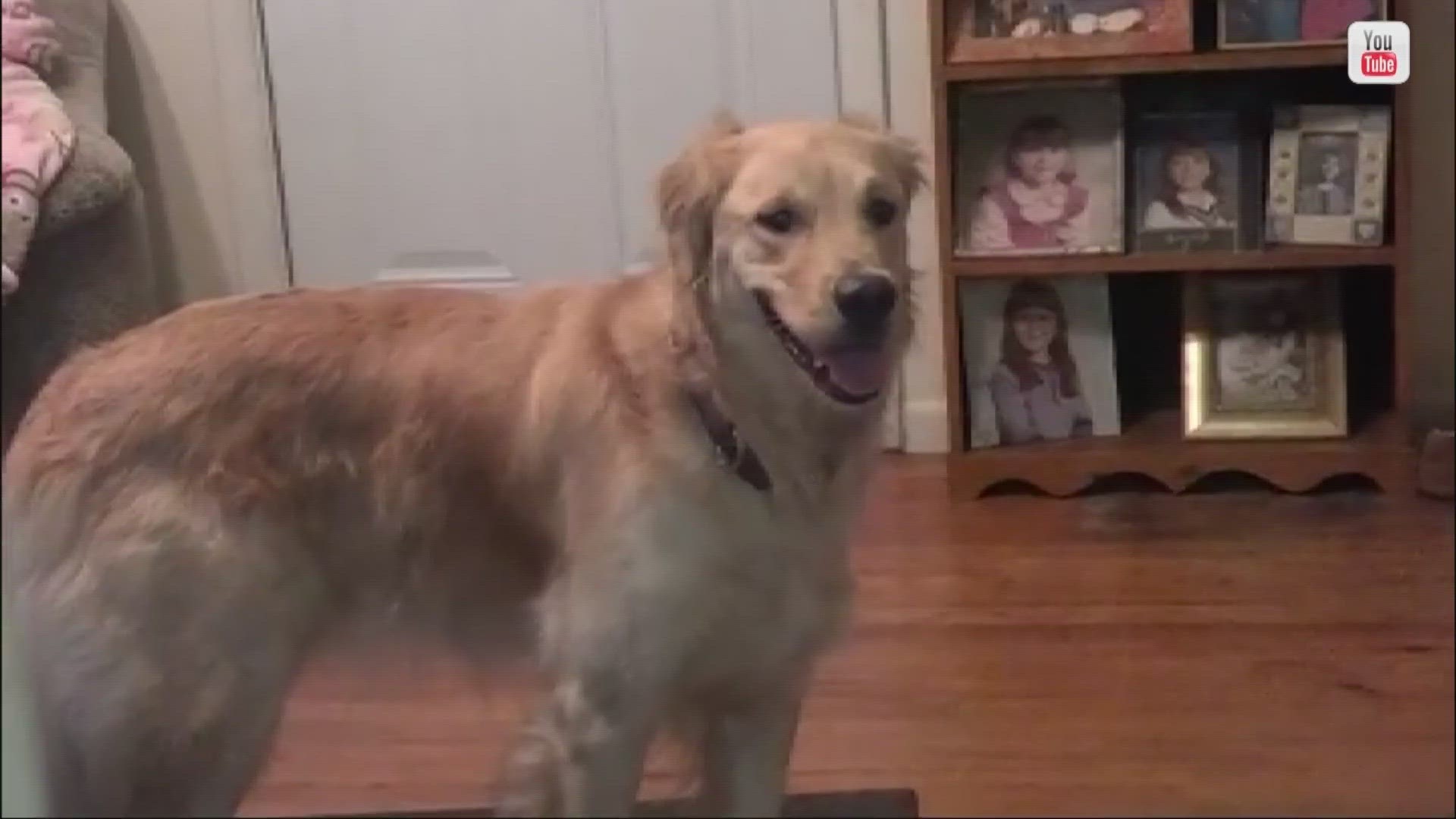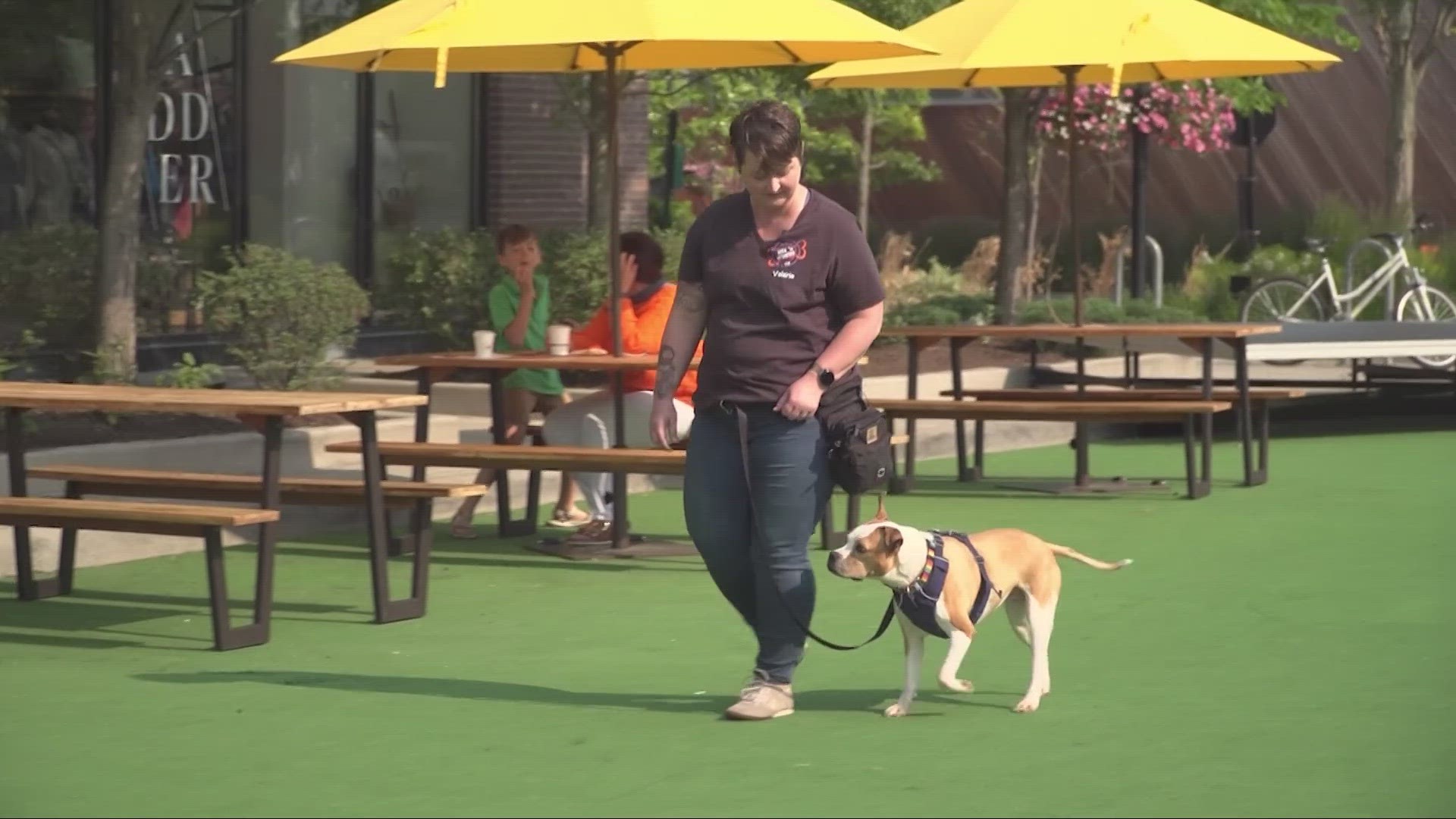CLEVELAND — There are two types of pet owners when it comes to the 4th of July: Those who fully enjoy the celebration and those who dread it.
If you are "pet parent" to a creature that quivers from the sounds of fireworks and even thunderstorms, you are far from alone.
And there's reason to be concerned...
More pets go missing around the 4th of July than any other time of year, according to the American Kennel Club.
The very best thing you can do is to make sure your cats and dogs are inside and secure when the show starts. Collars with identification and microchipping will greatly improve your chances of being reunited should your pet go missing. And who doesn't want that?
Valarie Ross is co-owner of Sits n' Wiggles Dog Training, which focuses on positive reinforcement. She fields many calls from clients whose dogs are considered "noise-phobic."
"My first answer is call your vet," Ross says. "There are several medications out there that can be really helpful for those noise phobias, and vets should be aware of them."

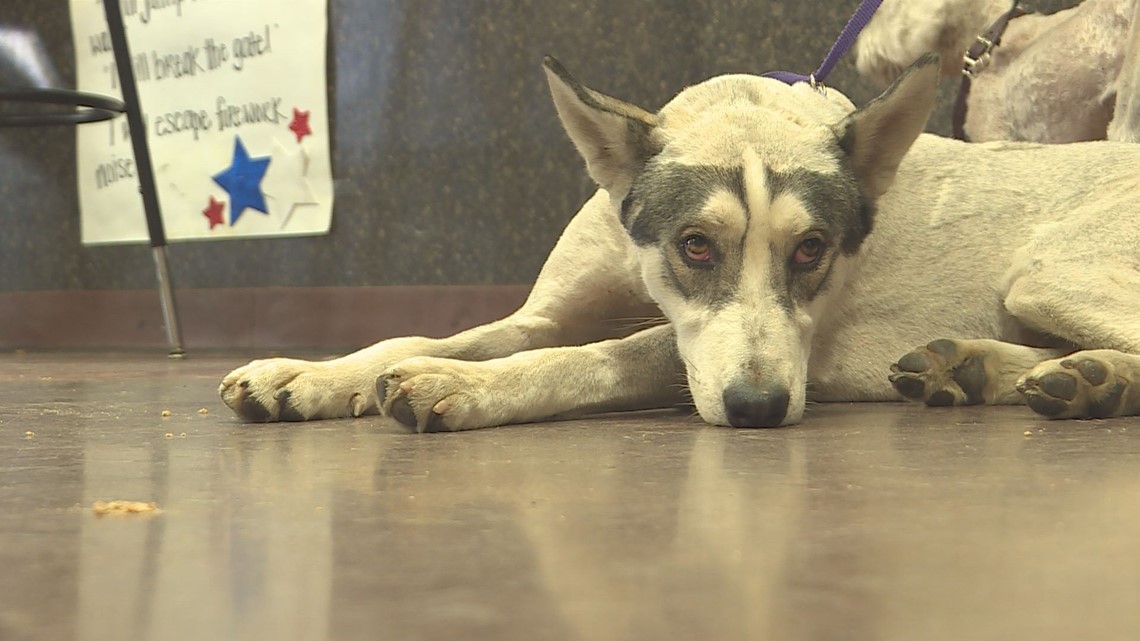
She should know. Her own dog, Grace, is not a fan of loud booms.
Because she focuses on dog behavior, Ross likes to try several methods to also help Grace through a storm or fireworks.
First is something called "bunkering protocol."
"The first step in a bunkering protocol is determining where is a safe space in your house for your dog and getting them used to that space," Ross explained.
That space may be a basement, interior room or hallway. The more layers between the dog and the noise, the better. If you can't get away from windows, draw the curtains or put up something that might block out light from lightning or flashes from those fireworks.
Next, provide an activity for your dog. A Kong with a favorite treat inside, such as peanut butter or pumpkin, will keep them occupied.
Ross also showed us a "lick mat," which you can spread a treat on. There are many benefits to these mats, including oral health, but they also can help calm and soothe your pet. Licking secretes endorphins, which is the "happiness hormone." If they are busy getting a treat off a lick mat, chances are they will be less focused on those fireworks. Lick mats are available at all big pet stores, and most of the independent ones, too. These are great to have on hand.

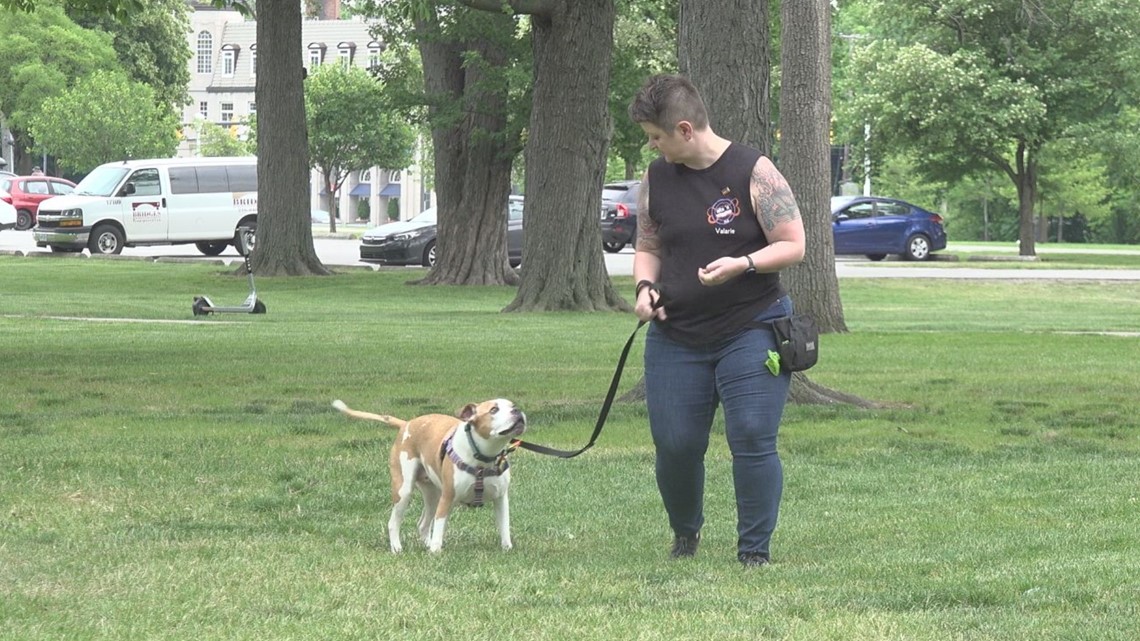
Ross also likes something called a "snuffle mat." Think of these as a "pet puzzle."
"It's pieces of fabric, usually tied or sewn into some sort of backing and you can just put treats or your dogs kibble into it," Ross explains.
To find the kibble, they must use their nose to forage a bit, something that's part of a dog's natural urge to hunt, chew and problem-solve. This action also encourages them to take some deep breaths and use their sense of smell, both things that can help calm a dog.
Ross also says "masking" is important. Masking is adding sound to drown out frightening noises. It can be soothing music, radio talk or a television program.

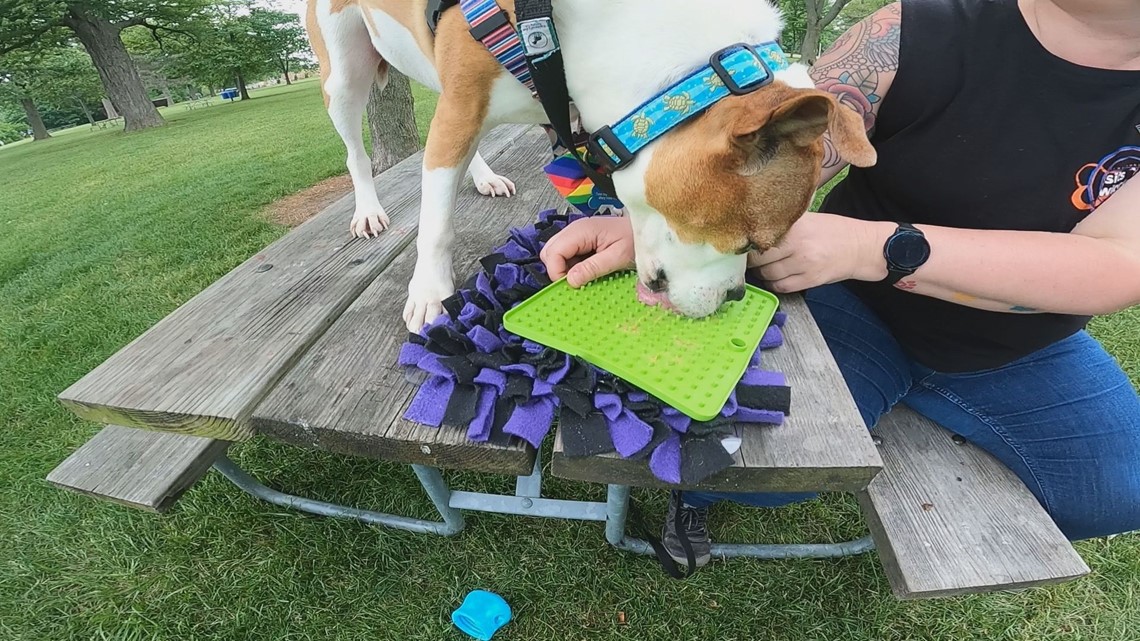
"Classical music, reggae, music and country music have been found through scientific research to have calming effects on dogs," she shared.
Just make sure to practice some of these techniques beforehand. It's not a good idea to throw something new at your pet on a day when they may already be feeling added stress.
Don't forget to get a good walk in earlier in the day so that your dog has had some exercise. Ross likes decompression walks, which she demonstrated on Ready Pet GO! earlier this year.
Also, take care of "potty runs" before that storm or the fireworks. Please, please, please be extra cautious with your pet, keeping that collar, I.D. and leash on -- even in a fenced-in back yard. There are many stories of dogs getting spooked in fenced yards, escaping and going missing.
Check out Sits n' Wiggles Dog Training HERE.

